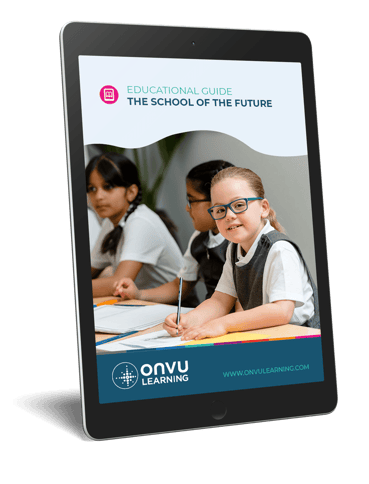What is blended learning?
Blended learning is the logical extension of traditional classroom-based learning. Students and teachers use technology to add to classroom learning at different times and in different places – with teachers able to give feedback both remotely and face-to-face.
What is the purpose of blended learning?
Blended learning has evolved to ensure that learning can continue when student and teachers are not in the same place at the same time. It has a number of key benefits, for example:
- Faster learning – for example students who are already confident in some aspects of a subject can move ahead and prepare for additional material
- Reduced learning loss – revising material studied in class is a key way to fully embed learning (it’s why schools offer homework!)
- To enable students to keep learning in different places and at different times – at home, while travelling, in school holidays, and as we’ve seen recently, when travel to school is dangerous.
How has blended learning evolved over time?
The concept of blended learning is not new – distance learning using books and other written resources dates back centuries. In Australia, the use of radio allowed the introduction of the ‘School of the Air’ to educate children in remote locations. In the UK, a further step-change in distance learning came in 1969 with the founding of the Open University – which used television programming and videos to supplement face to face and written learning. And the development of the Internet has allowed further development – from group video calls to students working together on projects from different sides of the world!
What are the differences between online learning, blended learning and hybrid learning?
There are a number of different approaches to learning at a distance and these three phrases can often be used interchangeably. However, there are some key differences.
- Online learning involves a totally remote experience – with students accessing course materials and responding to them without meeting the teacher. Most blended learning courses will have a significant proportion of online learning but will also offer more.
- Blended learning is a mixture of online and face-to-face learning where there is a clear distinction between in-person and online learning. For example a new topic might start with some online pre-reading followed by a face-to-face discussion (this is often called ‘flipped learning’). During the COVID epidemic it is common for students to move between full-time schooling and lockdown remote learning.
- Hybrid learning is a newer concept and one that has become much more common during the COVID pandemic. In this situation there are some people present in a classroom with others accessing the same teaching online.
How can a school adopt a blended approach?
It’s rare to find a school that doesn’t offer some blended learning today. But in order to do it effectively there are five areas in the school that need to be aligned.
-
- The curriculum. Before diving into technology, schools should look at how their curriculum can best fit with the idea of blended learning. We looked at some ways technology might influence what is taught in our ‘Classroom of the Future’ report
- Content. Blended learning requires materials to be prepared in advance – this could include material prepared from scratch by teachers or commercially purchased materials. The recent COVID epidemic has resulted in many new innovations in this area, such as England’s Oak National Academy which offers 10,000 lessons online.
- Teaching knowledge. It’s important that the content is delivered in a way that allows all students to learn. Teachers need to take their experience of the classroom but also research areas where remote learning needs a different approach. Forbes magazine suggests looking at the following areas when planning the remote parts of blended learning:
- Encouraging student participation
- Connecting new content to older material and providing examples
- Keeping it simple – perhaps it is no surprise that the BBC’s online learning service is called ‘Bitesize’
- Keeping a balance between synchronous (everyone taking part at the same time) and asynchronous (students accessing the same material at different times) teaching and learning
- Technology. There are many different types of technology that can be used to support blended learning – as we’ve seen above, printed materials, radio and television have been used successfully. However, the possibilities for today’s learners far outstrip these. Edutopia suggests four different categories of technology to investigate:
-
- Managed learning – platforms that control how and when people learn such as Google Classroom or Microsoft Teams
- Orchestrated learning – tools that teachers can use to support learning and assessment such as Kahoot or CenturyTech
- Collaborative learning – opportunities for learners to work together or with teachers. This may be through Zoom calls or project tools such as Miro
- Authentic learning – ways to share learning with others – such as Tapestry or school blogs
- Training. Beyond all these choices, it is really important that both teachers and learners are given sufficient training before they start the course, as well as being able to access support while learning. This is particularly important when multiple systems are being used.
What is the future of blended learning?
It is clear that the COVID pandemic has driven and will continue to drive new innovation in blended learning. At ONVU Learning we’re watching how our partners schools have responded to the pandemic (here’s one blog about the changes we’ve already seen) and we expect that there will be much more use of interactive remote material (from self-marking quizzes to AI-powered self-levelling learning), as well as more sharing of content to reduce the demands on teachers.
We’re also really clear that as this process develops, one key skill that will help teachers thorough these challenges is effective self-reflection – here’s our blog offering advice to teachers in this area.


